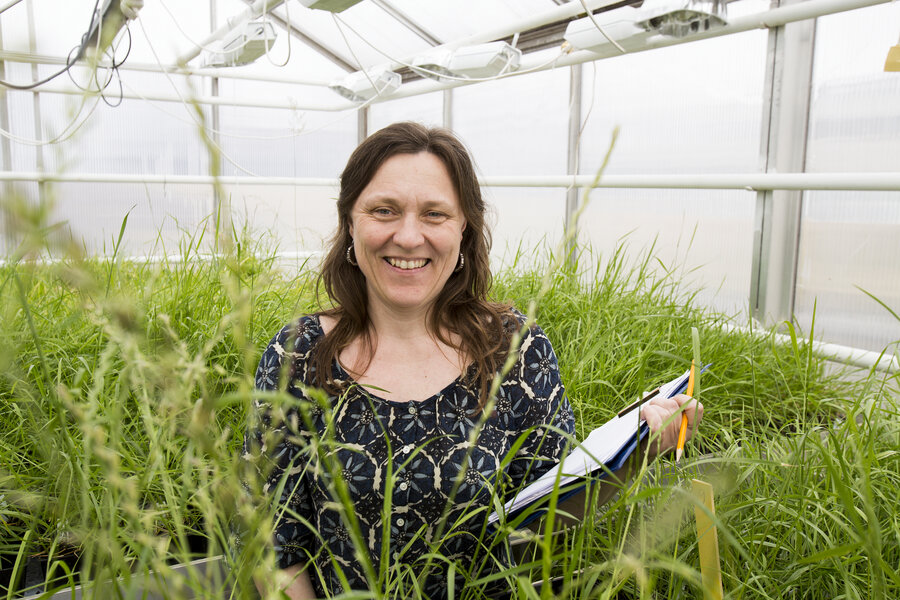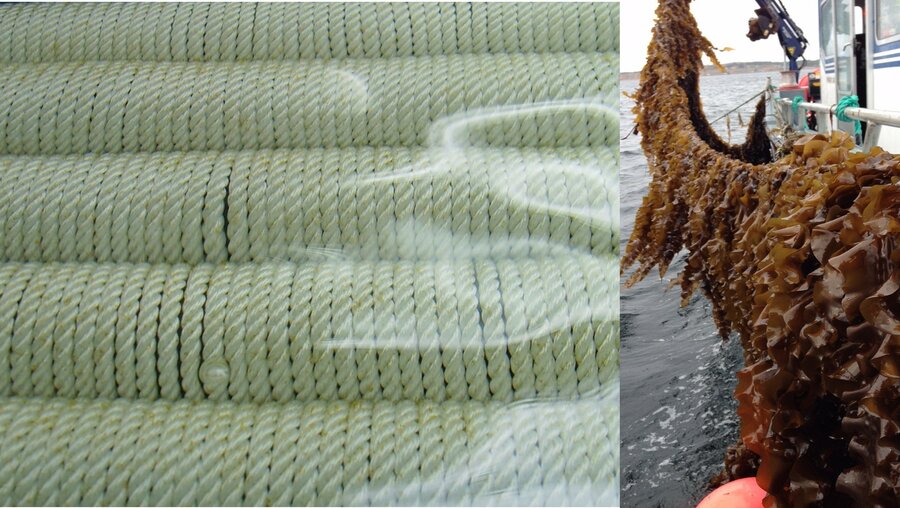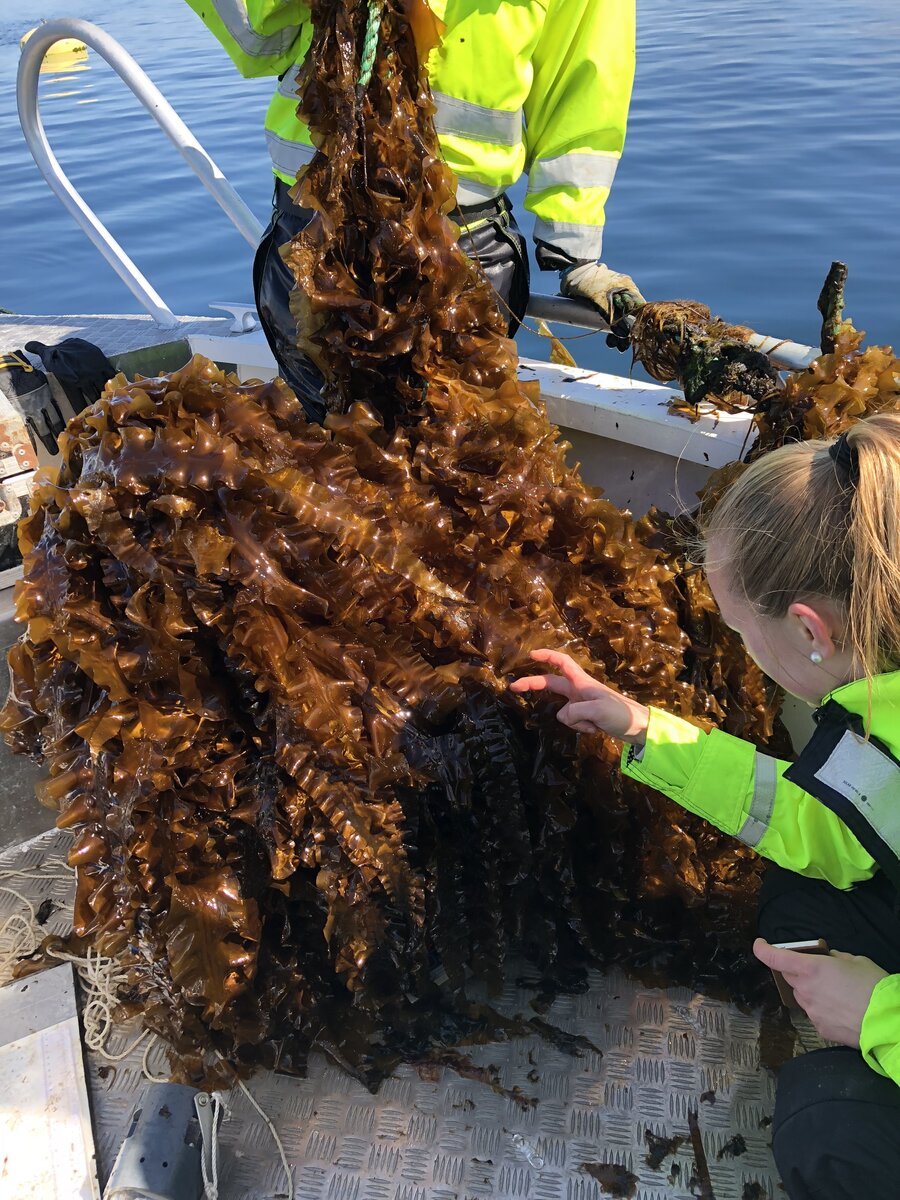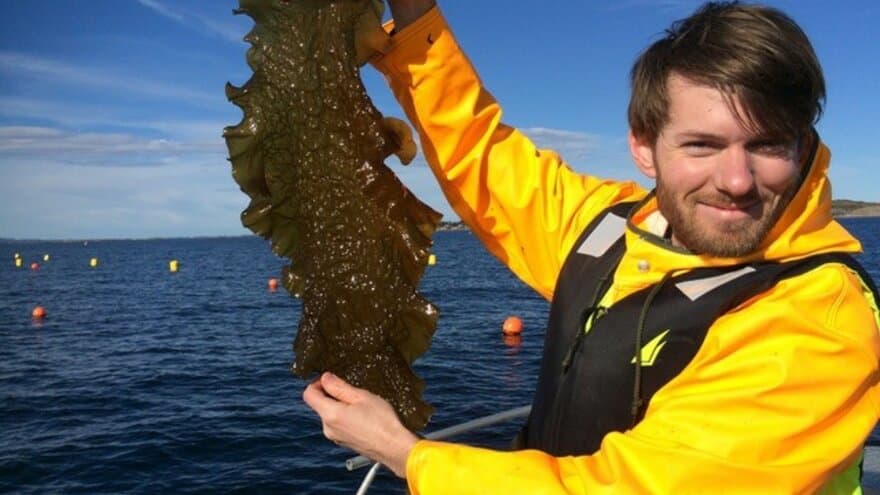The sugar kelp is a «super-organism» that can be used in animal feed and a wide range of other important products. Still, genetic improvement is required to make cultivation more profitable. A new spin-off from Foods of Norway aims to make this happen.
The sugar kelp (Saccharina latissima) is a common seaweed species in Norway. Luckily, it can be used for a multitude of purposes: food, fertilizer, pharmaceuticals, bioenergy and animal feed, to mention some. Foods of Norway`s research shows that sugar kelp can replace less sustainable ingredients in animal feed, thereby reducing the need for imports of protein-rich feedstuff like soy and fish meal.
Still, genetic improvement is needed to make the kelp suitable for large-scale cultivation and utilization. The pilot project was initiated this May with a duration of one year.
A new salmon adventure?

The main goal of the project, named «Breed4Kelp2Feed», is to lay the groundwork for breeding sugar kelp.
The intention is to breed for growth, resistance against diseases and a favourable chemical composition – depending on the area of application. In natural conditions, the species can contain iodine and heavy metals in concentrations that can be harmful to animals and humans when consumed in large amounts.
NMBU`s Department of Plant Sciences is in charge of the project.
Project leader Åshild Ergon says breeding can turn kelp into Norway’s next «salmon adventure».
- Economically, the production of salmon has been a great financial success for Norway. We can easily picture a similar development with kelp, as the potential for cultivating it along the coast of Norway is enormous. Breeding has been of invaluable importance for the «salmon adventure», as it has at least doubled the growth rate. We expect breeding of sugar kelp to have a similar impact.
Sustainable cultivation on ropes
Foods of Norway is a partner in the project, contributing with its knowledge and network related to the production and use of macroalgae.
- Breed4Kelp2Feed is a very interesting project that underpins Foods of Norway`s aim to develop sustainable feed resources based on blue and green biomass, says the director of Foods of Norway, professor Margareth Øverland.
Today we harvest kelp from natural kelp forests, but it is limited how much harvesting they can endure. The production of sugar kelp on the other hand is considered sustainable.
It is cultivated on ropes in the ocean, thus the harvesting does not affect the diverse ecosystem on the ocean floor. Nor does it require fertilizer or pesticides. Kelp production can even absorb excess nutrients leaking out from fish farms and thus contribute to carbon sequestration.

It`s complicated
However, project leader Åshild Ergon underscores that starting to breed sugar kelp is quite a challenge.
We still have limited knowledge about how its traits are controlled by genes and environment, and we do not have experience in maintaining, crossing and testing a large number of individuals and over many generations - hence the need for a pilot.
- Kelp are fascinating organisms. The life-cycle of the sugar kelp is in a way more complicated than that of humans and the plants we use in agriculture. The pilot will map out the preconditions for an efficient and optimal breeding programme to achieve genetic improvement in the fastest and cheapest way possible, says Ergon.
- We also have to make sure that we safeguard the natural populations, for example by making production plants that are unable to hybridize with them, she adds.

High expectations
The project includes five partners in addition to NMBU: Sintef Ocean, Seaweed Energy Solutions, University of Los Lagos in Chile, The Scottish Association of Marine Sciences and Aquagen.
- The seaweed cultivation knowhow of Seaweed Energy Solutions and SINTEF Ocean is a perfect match with NMBU’s expertise and history in plant breeding. Salmon breeding started at NMBU and it really makes sense to bring in this expertise also when building the seaweed industry, says Jon Funderud, CEO of Seaweed Energy Solutions.
Funderud calls the pilot a «milestone».
- All experience from agriculture and aquaculture suggests that breeding will be a key success factor, so this is an important milestone for the emerging Norwegian seaweed farming industry. We expect that the project will contribute to a more sustainable and profitable industry in the future.
Breed4Kelp2Feed is funded by the Research Council`s Large-scale Programme on Aquaculture Research (HAVBRUK). If successful, the project could be granted additional funding for further research.
Here you can read more about Foods of Norway`s research on novel, sustainable feed resources.
